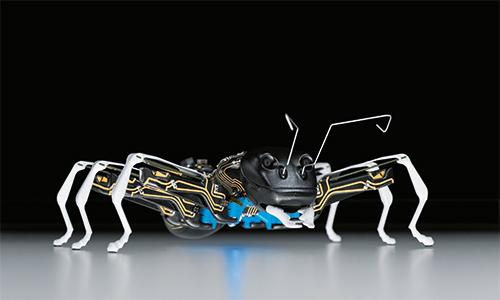Biomimicry and 3D printing have come together in new swarming ant and butterfly robots that act very much like their insect counterparts, the inventions of German robotics firm Festo.
The company introduced its two new robots -- BionicANTs and eMotionButterflies-- at the Hannover Messe 2015 trade fair in Hannover, Germany.
The robots not only look similar to the insects they’re inspired by, but also behave in similar ways due to a number of both visual and structural Festo technologies that demonstrate how robots can interact not only with each other but one day also with humans, Gabriele Goebel-Heise, a spokeswoman for Festo’s technology corporate communication, told Design News in an interview. Festo specializes in industrial robot technology, and so the robots are in part a study in how to create technologies that will allow robots and humans to interact in an industrial environment.
“In thinking about production of the future, the real and virtual worlds are continuing to grow together,” Goebel-Heise said. “The systems envisaged will consist of closely networked components and subsystems. The constant information exchange here guarantees the operational safety of the individual participants and hence the process stability of the entire system. [With the new robots,] Festo is already showing how several objects can be coordinated without colliding in a three-dimensional space thanks to multifaceted networking.”
Festo produced the physical components of the robots through a 3D-printing process of laser sintering, and then finished with the electrical circuits of the robots attached on the outside, integrating both the design and function of the robots.

The BionicANTs, like real ants, communicate with each other and coordinate actions and movements, according to Festo. “The artificial ants thus demonstrate how autonomous individual components can solve a complex task together working as an overall networked system,” the company said on its website.
The BionicANT has a 3D stereo camera in its head along with an infrared optical sensor at the bottom of its body, which records how much ground it covers. Battery power is provided by two onboard lithium-polonium batteries that provide up to 40 minutes of untethered power before needing to be recharged.
Read more: http://www.designnews.com/author.asp?section_id=1386&doc_id=277279&dfpPParams=ind_182,kw_40,aid_277279&dfpLayout=blog
Note: Materials may be edited for content and length. For further information, please contact the source cited above.
Copyright © 2024 International Society of Bionic Engineering All Rights Reserved
吉ICP备11002416号-1









